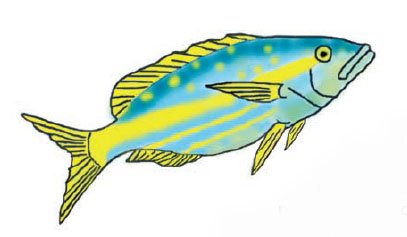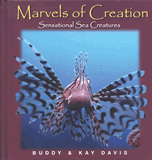Yellowtailed Snapper

There are 250 species of snappers, with the largest number of them living in the warm Australian seas. The yellowtailed snapper inhabits the shallow warm waters of the coral reefs at a depth of between 20 and 60 feet (10–20 m). They have been found as deep as 400 feet (122 m). The yellowtailed snapper is abundant around the Florida Keys in channels, inlets, and lagoons.
The name snapper comes from their habit of snapping their jaws open and shut when they are landed by a fisherman. The jaws can inflict nasty wounds to careless fishermen. In spite of their small size, they give a good fight and are very popular for that reason.
The yellowtailed snapper has a yellow line which runs along its flank. The tail is bright yellow and deeply forked. The upper side of this fish is blue-gray with a sprinkling of yellow spots. The top of the head is scaleless. They are deep-bodied and have a large head.
The yellowtailed snapper feeds day or night on shrimp, crabs, worms, and smaller fish. They stalk their prey by getting as close as possible. Then they dart out and quickly capture it. On occasion they feed on plant material and garbage from ships.
Little is known about the breeding habits of snappers. It does vary as to the region where the fish live, along with the temperature of the water and the time of year.
Snappers are among 300 or more species of fish that can cause fish poisoning called ciguatera. Symptoms include nausea, diarrhea, paralysis, cramps, and muscle pain. Ciguatera is probably caused by the fish eating a certain blue-green algae at a certain time of year. Despite this, snappers are a tasty, sought-after game fish.
Yellowtailed Snapper
Perciformes • Lutjanidae • Ocyurus chrysurus
Length: 12 inches (30 cm)
Weight: 5 pounds (2.3 kg)
Life Span: Unknown
Special Design Feature: Snappers are
euryphagous, which simply means they will
eat anything. This ability allows them to survive
quite successfully.
Did You Know? The snapper is named because
of its many teeth and large jaws which snap
open and shut when the fish is caught and
pulled on land.

Marvels of Creation: Sensational Sea Creatures
Brings the world of the sea alive in a unique and colorful way with photographs, a page of facts and commentaries.
Browse Kids BookRecommended Resources
- © 2025 Answers in Genesis
- Privacy Policy
- Contact
- About



